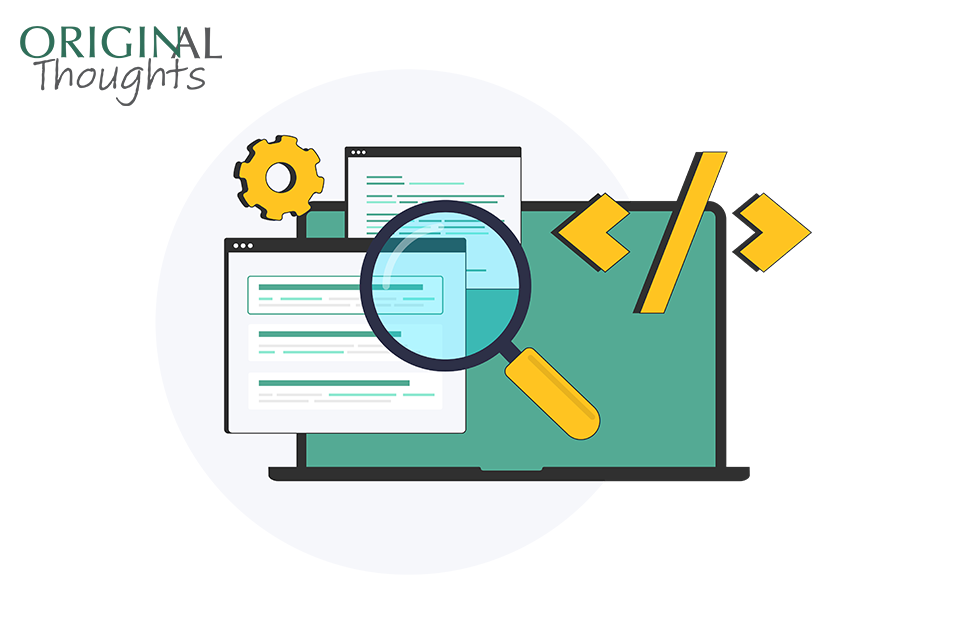First posted on the ORIGINal Thoughts Blog
By: Adam Etkin
Consultant, Origin Editorial
LinkedIn: https://www.linkedin.com/in/aetkin/
Take Home Points:
If you’ve ever considered moving your journal(s) from an existing publisher to a different publisher, the prospect can be quite daunting. Why would a society or organization move to a new publisher? Should they move to a self-publishing model? Where do you even begin? While transitioning to a new publisher can be quite an undertaking, I’m here to tell you the worst thing you can do is let fear of change hold you back. It’s easy to stay put and remain where you are, even if you may be unhappy with certain aspects of the relationship with your current publisher. Even if you are satisfied with your current situation, it may be a valuable exercise to explore other options to see if there are additional benefits being offered by competing publishers. In this blog post I’m going to discuss:
- WHY an organization may want to move to a new publisher
- WHEN to start the process and which key steps to complete along the way
- WHAT to consider & WHAT questions to ask when making the decision and the big one….
- HOW to move your journals from one publisher to another

“It’s time to move on, time to get going What lies ahead, I have no way of knowing But under my feet, baby, grass is growing It’s time to move on, it’s time to get going” -Tom Petty
WHY
There are really two main reasons a journal may wish to leave their existing publisher for a new one: 1) financial; and/or 2) dissatisfaction with the partnership.
FINANCIAL
Recently, George Woodward wrote about “The Business of Publishing: Questions Societies Should Ask Their Publishers” in another ORIGINal Thoughts blog post. Many of the same points and questions related to finances apply here. Perhaps you’ve seen declining revenue over the years, or revenue has been flat. There may be industry-wide reasons for that which have nothing to do with the publisher. In fact, in some cases, flat revenue may actually be a positive sign! However, it is important to know where your revenue is coming from and for there to be transparency from the publisher on how revenue is being earned and calculated.
Despite industry trends and the general overall marketplace, a society might be unhappy with the publisher’s role in their journal’s financial performance, this being one motivating reason behind the desire to switch publishers. Perhaps there was a bad deal from the outset, maybe even something negotiated by someone no longer with the organization that was in place prior to your joining. Maybe the current publisher isn’t exploring new avenues for revenue and/or it feels like sales agents are just “phoning it in.” There could be a lack of transparency around what percentage of revenue is being allocated to your journal from transformative agreements or journal collections. It could be any combination of all of these. Whatever the case may be, you feel that you’re not getting the maximum, reasonable, expected revenues from your journal.
PARTNERSHIP/RELATIONSHIP
There are many reasons a journal partnership with a publisher may not work out. Maybe it was a poor fit from the start. Perhaps there was a change in account managers that adversely impacted the working relationship. I’ve had clients who did not even know who their account manager was! There have been many instances where a journal was with a smaller publisher that was bought by a larger publisher and the transition resulted in a poor experience or lack of attention. Maybe you’re seeing competing journals taking the lead on new initiatives and you’re feeling left behind. You’re constantly finding mistakes being introduced during the production process or some other workflow and can’t seem to get a straight answer or a solution. Like any relationship, there can be ups and downs, and ideally, you’d like to work things out, but sometimes you just can’t, and you feel it is time to “break up.”
One word of advice related to “relationships” when you make the decision to transition to from publisher to another: It may seem obvious, but it’s critically important to act in a professional and courteous manner. Never “burn any bridges.” If I’ve learned anything in my time in this industry, it’s that you never know who you will work with again in the future and it’s always best to stay on good terms whenever you can. Many of us who have worked in scholarly communications for a long time understand that our community is small and crossing paths with the same individuals in different contexts is not uncommon.
WHEN
You can really start asking these questions at any time, but if the possibility of switching publishers is a reality, then you need to be aware of what the contractual situation and obligations of all parties are. These scenarios assume that you own the rights to the journal and your content. If this is not the case, you’re really stuck, unless things are so bad you’re willing to leave and start a brand-new journal from scratch (If you are, contact us at Origin. We can help with that!)
Assuming that you do own the rights to the journal, make sure you’re familiar with the current contract/agreement and get professional legal advice when needed. For the purpose of this discussion, I’ll focus on what’s typically in the “termination clause” of most journal publishing agreements; specifically, the amount of notice you need to give the current publisher that you’re ending the current agreement. Usually, the contract will require that the party terminating the agreement inform the other party at least six months prior to the contract end date, but it can be more or less, so make sure you know when this date is and plan accordingly. Set reminders to ensure you do not miss this important date!
Work backwards from this date and plan for at least 12 months to complete the tasks of evaluating your current situation and options. Eighteen months is even better, especially if you plan on engaging in a full request for proposal (RFP) process. It is possible to complete everything in a shorter timespan but err on the side of more, versus less, time to complete the process. Even if your preference is to stay with your current publisher, give yourself plenty of time. While you might have every intention of staying put, having a conversation and asking questions could raise some red flags and make you look at other options. In this scenario, reach out to your publisher well in advance of the contract end to gauge their level of commitment to your organization and journals. You may find out they’re scaling back on budgets, moving key team members overseas, changing submission and peer review systems, or perhaps they are being bought by another publisher. These are all things which could hurt your journal operations and cause you to reconsider drafting and sending out that RFP! On the bright side, we have had clients that found their current publisher was devoted to them and displayed this by offering better financial terms and committing to working on new initiatives.
Some, but certainly not all, questions related to starting the process:
- When does your current contract end?
- How much notice do you need to give so that the existing agreement does not auto renew, and you can terminate the current contract?
- Will your current publisher commit to maintaining existing software and systems, or conversely, switch to different systems if you so desire?
- Will they maintain or increase financial support of the editorial office?
- Will they guarantee minimum royalties on projected revenue?
- Is a signing (or resigning) bonus possible?
- Who are the other publishers that are candidates for your journal?
- Can you write a full RFP and distribute that to all the publisher candidates?
- Can you evaluate the RFP response yourself and schedule interviews with final candidates?
HOW
Deciding whether you can handle part, or all of the RFP process, is among the questions you need to answer early on in the timeline. Crafting a good RFP would take a separate blog post of its own, but it should include a summary of your organization, your journal(s), a list of questions the potential publisher is required to answer, financial details and projections, a due date for the response, and a timeline of next steps. If you need help with the RFP process, we do that as well, so contact us!
Now, you’ve gone through the RFP process, selected your new publisher, and negotiated a contract. Congratulations! Now what?
Fortunately, most publishers now adhere to the NISO backed Transfer Code of Practice. Transfer provides “consistent guidelines to help publishers ensure that journal content remains easily accessible by librarians and readers when there is a transfer between parties, and to ensure that the transfer process occurs with minimum disruption.”
The good news is that in most cases, the publishers will do the “heavy lifting.” This will include transfer of all journal content files and corresponding metadata, subscriber and user files, and everything related to your journal content. However, it is crucial that you have someone who has oversight of all of this to ensure things are getting done on time and can jump in if/when there are unavoidable hiccups. Referring to the timeline we built in the “when” section, if your “go live” date for the new publisher is January 1, 2025, I’d advise you to make your goal have all tasks complete by November 2024. The last thing you want is to enter the holiday season with major question marks that could leave you without a functioning journal when the new year begins. Some of the main tasks which will need to be completed include:
Transfer of content (back issues, current articles, multimedia etc.)
Again, due to the Transfer Code of Practice, this is much easier than it was in the past. However, it still requires a great deal of communication and coordination between the old and new publisher with oversight by someone on the journal side making sure everything runs smoothly. Generally, these transfers occur via FTP. The new publisher will request the files be provided by a specified due date. The journal representative should confirm that all was received and in proper format when it is needed. Testing that everything appears and functions correctly will happen at a later step (see below).
Submission/peer review system
This can be a bit tricky. Depending on what you negotiated with your new publisher, you may or may not be moving to a new submission and peer review system. If your old publisher used Editorial Manager but your new publisher is moving you to ScholarOne, you’ve a few things to juggle and work through.
If you are not changing systems, you may be able to just transfer ownership of the pre-existing system to the new publisher and you’re set. Having said this, there is the possibility that if you are dead set on staying with your existing system and it is different from what the new publisher would provide, you may have to pay for that. This can be quite costly, so be sure to factor that into your decision making and your budget. Contacting the current vendor directly may be worthwhile to try to negotiate a reduced rate. They may be willing to accommodate you as they will not want to lose a client.
However, it is likely there will be a change and with that comes a transition period where the journal editorial office will be using two systems at once. The “old” system will need to remain up and running as existing revisions are finalized. At the same time any new submission will need to be sent to the “new” system. This will require the editorial office, editors, and reviewers to be trained on the new system before it is opened. Generally, this transition period will last a few months. Asking your current publisher if it is possible to extend the time frame that your existing system remains active might be necessary.
You’ll also want to see if the history of submissions and peer review can be transferred to the new system, or exported in a format that can be retrieved if need be.
Subscriber/member lists
This is another area where being knowledgeable about your contract is crucial. While a society has access to their own member lists, it is not always clear who owns the non-member subscriber lists. If the publisher owns this data, they may have valid reasons for not sharing it with your organization or the new publisher. If the contract states that you are entitled to these lists, it is important that all information related to the current subscribers is shared. Names, email, institutions, terms and length of current subscription, and so on. Additionally, it is valuable to get information on past and expired subscribers so that the new publisher can try to follow up and attempt to garner renewals.
Members Access
Usually, society members gain access to journal content via their society website. They log in to their society account and click a link which grants them full access to the journal online content. This is accomplished using a unique referrer embedded in a line of code contained in the link to the journal. Keeping seamless access for your members will require communication between your new publisher and the person responsible for your website. This may or may not be someone within your organization. Again, once this is in place it is important that it is tested prior to launch.
URL redirect
Some journals use a unique URL that redirects users to the journal online content. If you have used this with your old publisher, you again will need to coordinate with the new publisher to make sure this continues to work after the switch over. Like member access, it may require you to communicate with someone outside your organization to have the DNS (domain name server) records changed to point to the new publisher website.
CME functionality
Many journals offer CMEs related to journal content. In these cases, the tools used to earn and process the CMEs may be native to the publisher platform. Again, this is an area that should be discussed and negotiated prior to the transition. If CMEs were tied to your previous publisher, you’ll need to arrange to have any existing data sent to either your organization or the new publisher. You’ll also need to make sure that the new systems are set up and working properly prior to launch.
Rights integration
This is one example of something that could apply to multiple areas when transitioning to a new publisher in that it likely involves a third-party provider. Most journals utilize “Rights Link” from Clearance Copyright Center (CCC) to handle requests for rights, pay-per-view, Open Access fees, and other transactions. The new publisher will need to contact your CCC manager so that all links and payment processing tools continue to work once the new site is live.
DOI updates
Working with Crossref, another critical third-party, to get your journal DOIs (Digital Object Identifier) updated should be easily handled by your new publisher, but at the risk of being repetitive, someone representing the journal needs to assure it is done! Crossref also provides plagiarism screening and other tools, so this is a good point to address any other changes which need to be completed in order for everything to work properly after the move.
Production
It is likely that you’ll be getting a new production team with your new publisher. Do you have an in-house production manager or is this going to be someone at the publisher? Who will handle copy editing and proofs? Who communicates with the authors? Is there a new online production system that will require additional training (probably!)? A journal style guide will need to be provided to the new production team, so this may be a good time to look it over and update it as needed. Don’t have a style guide? Time to create one!
System testing
As mentioned a few times above, it is absolutely crucial that all systems are tested by multiple parties and users prior to going live. This includes, but is not limited to:
- The online content:
-
- Does everything look the way it should?
- Do links work? Do videos play?
- Does member access work the way it should?
-
- Submission/peer review:
-
- Do all users have the correct account rights?
- Is the workflow set up and working properly?
- Are auto emails formatted as you’d expect and working?
- How are accepted articles sent to production?
-
- Production:
-
- Are accepted articles being sent out on time & received by the proper staff?
- Is copy editing being done in a timely manner and correctly?
- Is communication with authors smooth and efficient?
- Are “online early” type articles made available in a timely manner & appearing as they should?
-
Communication is Key
Communicating with your community during and after transition is often overlooked. While your board of directors and/or editorial board may have been involved in the evaluation and decision process, the community at large was not. It may surprise you to hear that, in general, the average society member or journal reader does not even know or care who the publisher is! If something does not work or if they are asked to pay for something out of the ordinary, then they may become interested, but otherwise, if they can access the content they’re looking for, they’re generally happy.
Take the time to communicate with them, in advance, if possible, via email, social media, or the monthly newsletter to let them know about the upcoming change. Explain why it’s a good thing, how it will impact them, and key dates they should be aware of.
After launch, send a follow up communication making the “big announcement” and informing them of what, if any, changes they might expect. This could also be a good time to re-engage your community by reminding them to sign up for eTOC alerts, and other journal-related member benefits you want them to make use of.
As with any changes, be prepared to hear some negative feedback. Look, not everyone embraces change! Usually, those who are “satisfied customers” have no reason to contact you. “No news is good news!” But there may be some who are not happy, and, in many cases, they may have legitimate concerns and bring to light problems that were missed during testing. Take the time to answer these users and thank them for sharing their experience with you.
It’s also important to communicate the change with other departments within your organization, if you’ve not done so already. For example, accounting, communications/PR, IT – anyone else at your organization who might interface with the publisher. I’ve seen situations where a year after a publisher change someone in finance sent a check to the old publisher because they simply were not told there was a change!
In addition to communicating with your own members and organization, you should have ongoing, regular calls/meetings scheduled with your new publisher account manager and any other key staff. These can start out on a weekly basis and continue if you feel they are needed. In time you may feel moving to every other week is satisfactory, assuming all is going well. Other meetings with sales, advertising, or marketing representatives can be scheduled independently. It is important to keep an open, transparent line of communication to maintain a healthy partnership.
Again, the prospect of leaving your current publisher and moving to a new one can be scary. What’s even scarier is staying in a situation that might be hurting your journal and organization from growing and thriving. If you’re organized and patient, you’ll find the process can be rewarding, even if you decide to stay with your current publisher. Origin Editorial has extensive experience in both the RFP process and in assisting journals from moving from one publisher to another. If you are in the market to evaluate your existing publisher and possibly look for a new one, reach out!






